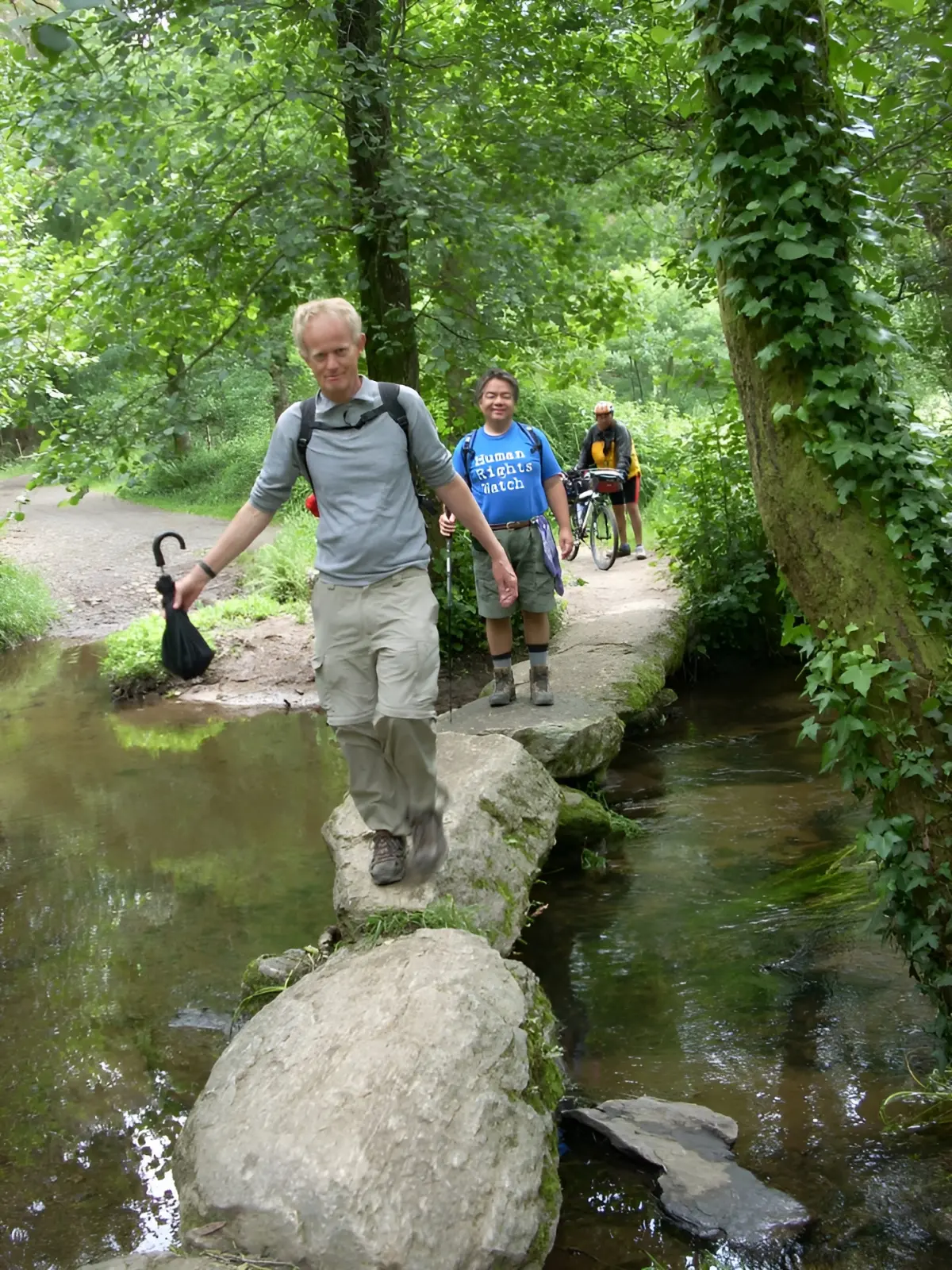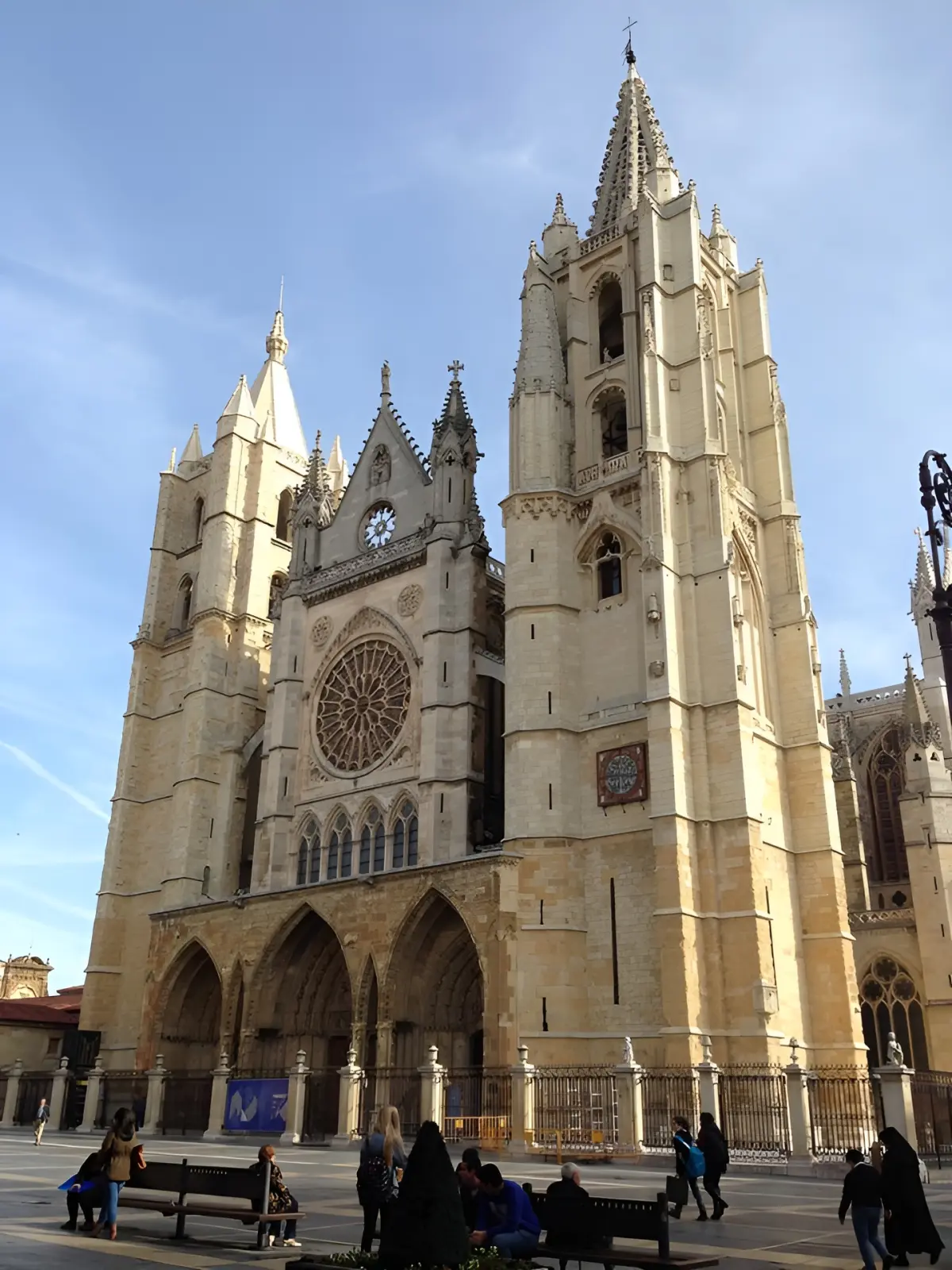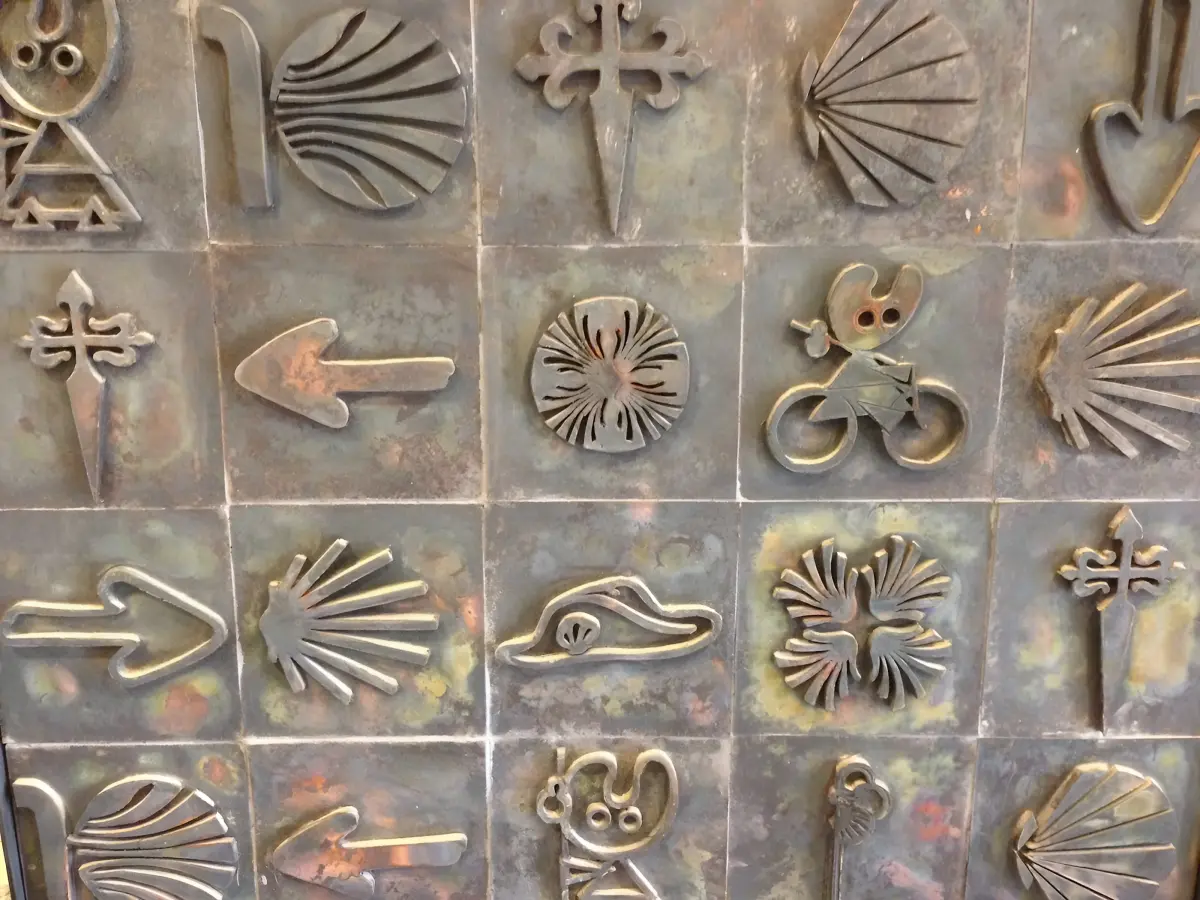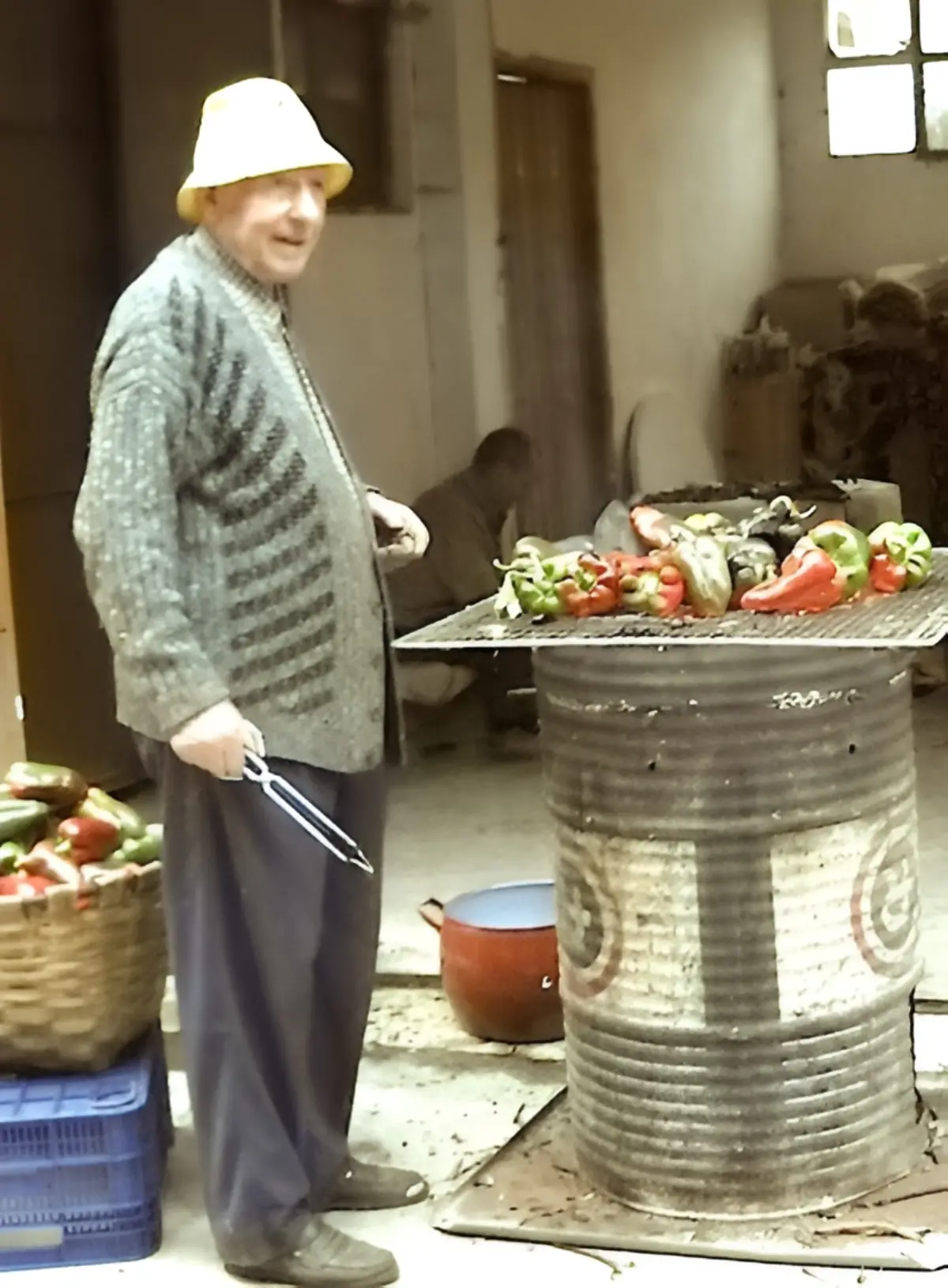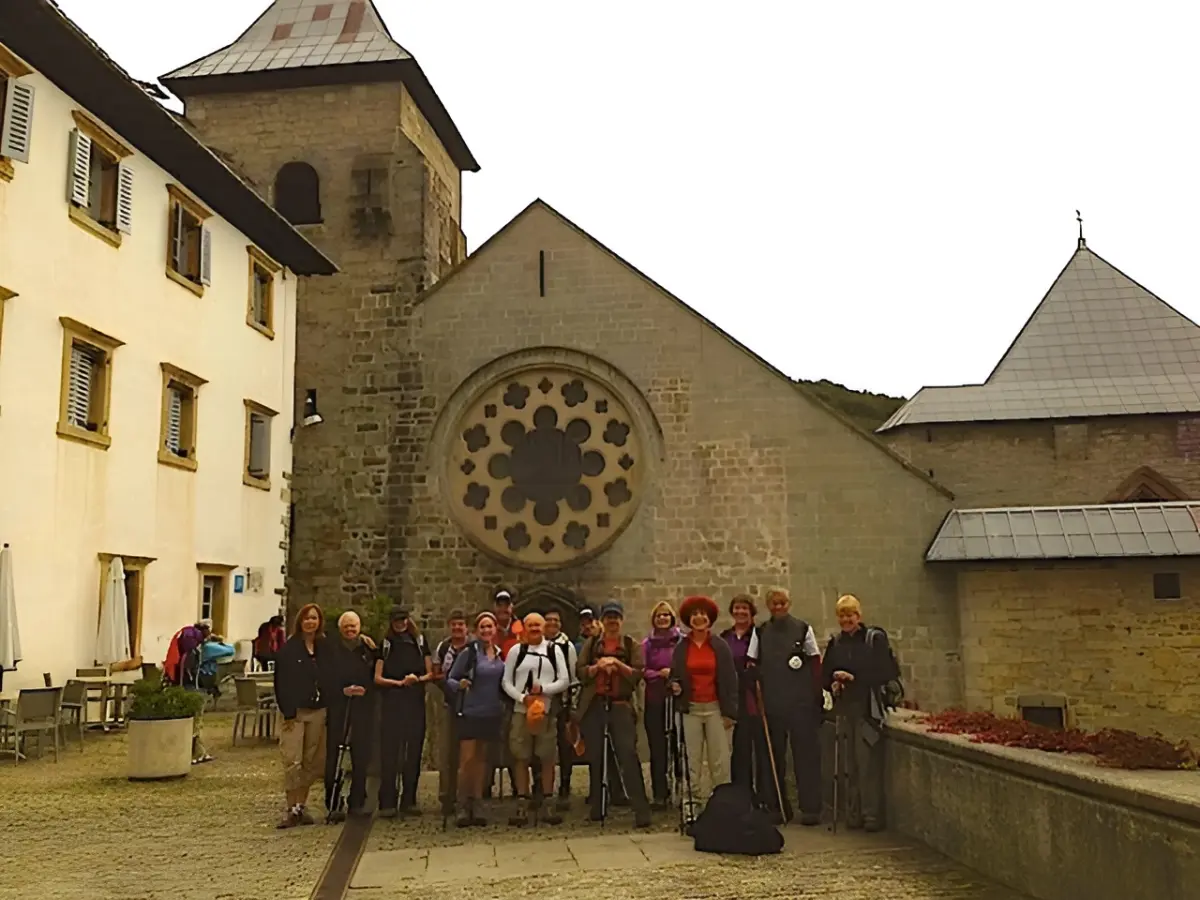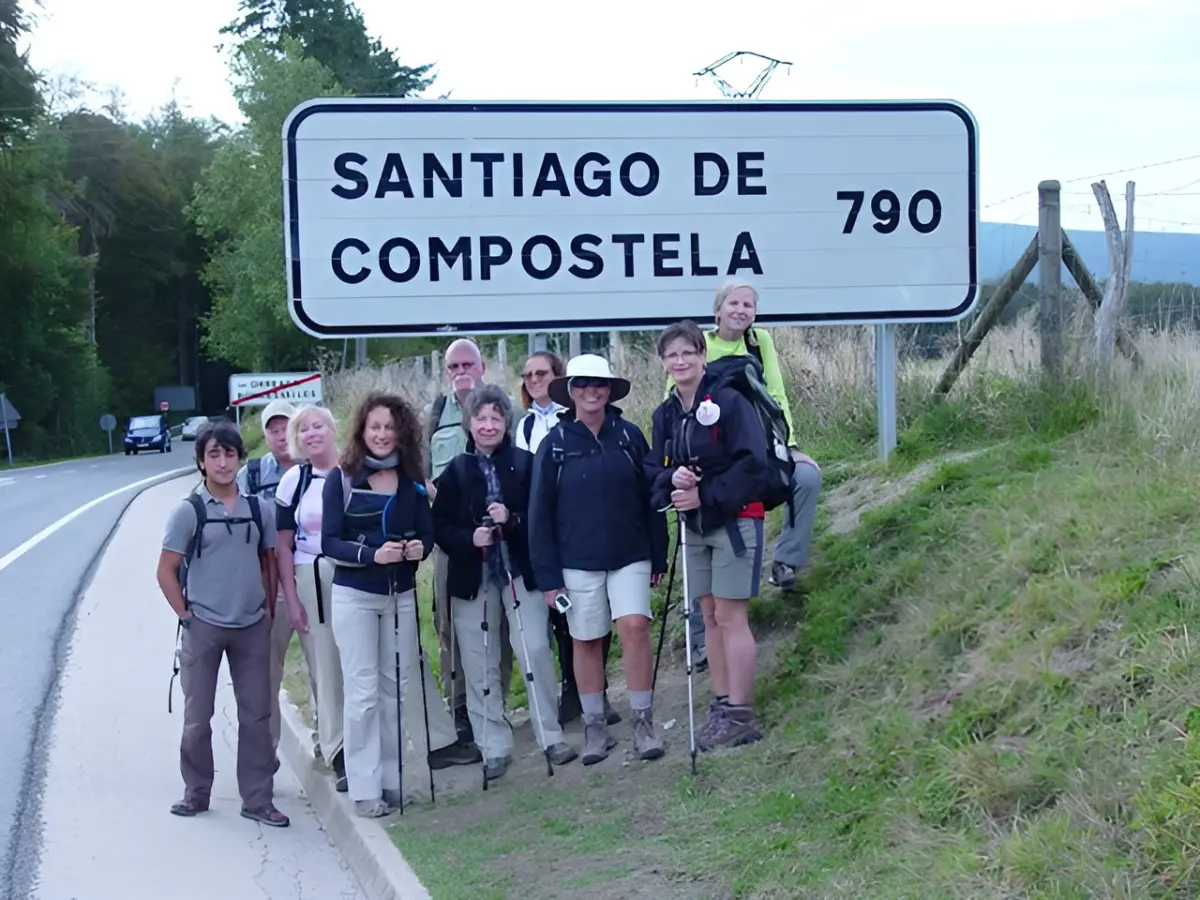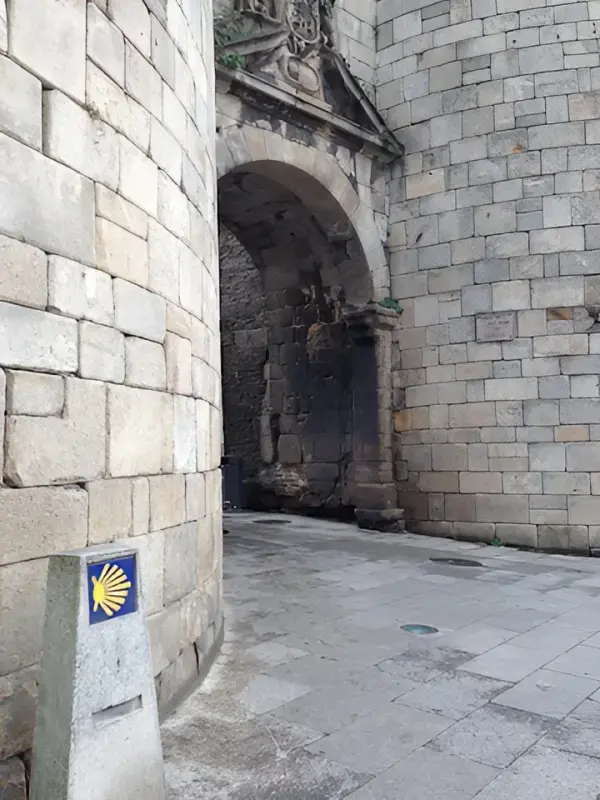
4700 EURO PER PERSON
750 Euro Supplement
The Camino de Santiago was one of the busiest roads in Europe during the Middle Ages when some 500,000 people a year, from every part of Europe, walked to the tomb of St. James. This 15-day trek along Europe’s greatest spiritual byway, takes us to a host of magnificent cathedrals, monasteries, castles, and museums, across varied landscapes, miles of vineyards, Celtic villages, great Castilian cities, through peaceful chestnut forests, along the well-marked footpaths to the great city Santiago de Compostela. It was here in the northwestern corner of the Iberian Peninsula that the tomb of the apostle St James was, legendarily, discovered in the year 813.
Join us on this adventure of “walking through history” from the border of France to Santiago de Compostela with experienced guides, comfortable accommodations (w/ private baths), full van support, all breakfasts, 2 dinners, and visits to historical monuments. Our itinerary will recreate, in a walk-drive-walk fashion, the experience of the medieval traveler but with the luxury of modern-day conveniences. Group size is limited to 18 pilgrims.
All hotels, breakfasts, 2 dinners, and van support w/ healthy snacks are included in the tour price.
Itinerary
Day 1: Roncesvalles
We will meet at the Pamplona train station at 1 PM and then drive up to Roncesvalles in the Pyrenees. Our pilgrimage begins in the medieval kingdom of Navarra, where we will walk a few kilometers to Alto de Mezkiritz to get warmed up for the days ahead. In the evening, we’ll join fellow pilgrims from around the world for Mass in the church of the 11th-century monastery of Roncesvalles. This monastery is one of the earliest examples of Gothic church architecture in Spain. After Mass, pilgrims will receive a blessing from the canons of the monastery, a rite that dates back to the 12th century.
8 km
Day 2: Puente la Reina
Our second day of walking the Camino is out the back door of our hotel. This is our two-hill day! It is one of the most challenging days on the route, yet one of the most beautiful. Once we arrive in the hamlet of Biskarete, we travel by van to Alto de Perdon. From this high point, it’s 10 more kilometers to our hotel in Puente la Reina, meaning the bridge of the queen (11th century). This medieval town, built on the river Arga, is the confluence of where several of the principal pilgrimage roads coming from Northern Europe merge and continue west to Santiago. Puente la Reina’s narrow main street, Rua Mayor, is a perfect example of what a pilgrim town was like during the Middle Ages. Later in the day, we will visit the octagonal Romanesque church of Eunate, built in the 12th century by the Knights Templars.
5-20 km
Day 3: Viana or Najera
We will set out from the town of Villatuerta, some 5 kilometres from Estella, otherwise known as “Lizarra” in the Basque language, old church. Straddling the Rio Ega, this colourful little town was meant for commerce, encouraging northern Europeans to settle here and enticing pilgrims to pass through its streets. After a visit of the town centre and the church, we will continue our walk to Irache and the Fuente del Vino.
From Torres del Rio, a town most likely founded by the Knights Templars, an optional 12 kilometres will be available for those wishing to walk more to our hotel in the heart of Viana.
5-20 km
Day 4: Santo Domingo de la Calzada
We leave the province of Navarra behind us and enter Spain’s most celebrated wine region, La Rioja. We’ll drive to the town of Najera on the River Najerilla and beneath the red cliffs which give the town its name, “between the stone” in Arabic, referring to the cliff dwellings that are visible from the town center. Our walk will take us through vineyards of the La Rioja wine country. Upon reaching Santo Domingo, you will want to visit the 12th century Cathedral of Santo Domingo de la Calzada where a rooster and hen reside inside a 5-star chicken coop above the tomb of St. Domingo.
5-22 Km
Day 5: Castrojeriz
A guided tour of the cathedral in Burgos is the first thing on our agenda. Before the dusty little Castilian town of Hontanas, as a crossroad in the middle of a wheat field, we will begin our walk to the town of Castrojeriz, set beneath the ruins of a pre-Roman castle, which at one time was a commercial center that prospered as a fortified way station for pilgrims.
5-15 Km
Day 6: Astorga or Rabanal
Walking from the hotel, our hike will take us up and over a small knoll and into the heart of the breadbasket of Spain. From there, we drive across the flat plains to the monumental city of Leon where we glimpse inside this magnificent cathedral illuminated by 13th century-stained glass and visit the Iglesia de San Isidoro, with preserved 12th century frescos, sometimes referred to as the Sistine Chapel of the Romanesque era. Tonight, in Rabanal, venture out on your own and sample some of the food this region has to offer.
10 Km
Day 7: Bierzo Valley
From our hotel, we follow the Camino, passing an ancient hamlet until we reach the Cruz de Hierro where we deposit our rocks we brought from home. Before we move on to the hotel, we visit the Knight’s Templar’s Castle. We stay near the border of Galicia, but still in Leon.
20 Km
Day 8: Samos
Today is one of the Camino’s most beautiful walks as we cross the border from Castilla y Leon into green Galicia and the Ancares mountain range. This 13-kilometer climb from the hamlet of Ambasmestas will be the second most challenging hiking days of the pilgrimage to Santiago from Roncesvalles, but memorable as we reach the high Celtic village of O’Cebreiro. Here we visit pre-Roman style dwellings with thatched roofs, a restored pre-Romanesque chapel and pilgrim hospice dating back to the 9th century. At almost 4000 feet, this village is famous for its miracles. The most famous being the at the Holy Grail from which Christ drank from at the last supper was hidden here. Later in the day, we drop into the Torobio River Vally Basin to the town of Triacastela, where pilgrims would pick up a stone to be used in the construction of the cathedral in Santiago. We slumber in for a night at a handsomely restored B&B in the countryside. 10-20 Km
Day 9: Sarria
Our morning starts out the front door of our Casa Rural. From there, we continue along the Camino to the town of Sarria, where we can enjoy a glass of wine along the river walk. There is an option of visiting another monastery and the 15th century watchtower at the top of the hill. Our hotel is in the town center.
10-15 Km
Day 10: Sarria Portomarin
We now have around 100 kilometers to go. More of the well-marked paths will take us through the lush green countryside where farmers are still working hard in the fields of driving their cattle to another pasture to graze. Lunch will be in Portomarin where a large medieval church was reconstructed stone by stone in the 1950’s to make way for a reservoir, damming the Rio Minho for agricultural and recreational purposes.
Day 11: Palas de Rei
Our walk from Portomarin this morning will be along a country road leading us to Palas de Rei, Palas of the King, named after an 8th century Visigoth king. After a visit of the tiny 12th century chapel, we drive to a restored farmhouse near Palas de Rei tucked into the countryside.
12-24 Km
Day 12: Casteneda or Arzua
In the morning, we return to Palas de Rei to continue our walk along the Camino through small villages with numerous religious crosses, small chapels, and tall Galician corncribs. Before our group picnic in Gasteneda, we suggest you stop in the town of Melide at the famous Pulporia to sample one of Galicias specialties – Pulpo Gallego – steamed octopus prepared by the locals and enjoyed by pilgrims! After lunch, we continue our walk to Arzua where its dairy industry is famous for the creamy cow cheese, Tetilla, made in the shape of a woman’s breast.
12-24 Km
Day 13: Casteneda or Arzua
From Arzua, our journey is dotted with small hamlets hidden amongst tall eucalyptus trees and behind moss covered stone walls. Villages named, Rua, Calzada, and Calle all refer to the word road, recognizing that the pilgrimage road has been leading pilgrims to Santiago for centuries through these tiny villages. We end our day of walking at the Kilometer 14 marker in the town of Amenal.
12-25 Km
Day 14: Santiago de Compostela
Today, we embark on the trail for the last time. One notable village along the way is Lavacolla, where pilgrims would wash themselves in the shallow stream before entering Santiago. Just 4 kilometers before reaching Santiago, we encounter Monte del Gozo, also known as Mount Joy, which offers our first glimpse of the cathedral’s towers. According to tradition, the first person in your group to see the church towers has the opportunity to officially change their name to “King” (Rey, Leroy, Le Roi). Our Camino walking journey ends at the steps of the cathedral today. We will gather for a celebratory dinner together.
12 Km
Day 15: Tour End – Buen Camino!
After a leisurely breakfast and before saying good-bye, a local tour guide and historian will show us the main sights on a two-hour guided walking tour of the city and the cathedral.
Breakfast included
* Please note that this itinerary may change slightly due to factors such as accommodation availability, weather conditions, festivals, and spontaneous side trips.
** This trip is not a competition or an endurance race. We ask that everyone respects the different paces and lifestyles of fellow participants on this group journey.
*** There may be instances where we stay for two nights in the same hotel or B&B due to limited accommodation options at the end of our daily walking stages. Many travelers find this beneficial, as it allows you to unpack or take a rest day if you choose not to walk on a particular day.
Location
FAQs
How many miles do we hike per day?
We average between 10-16 miles per day. We follow the same path that the independent pilgrims are walking. With Spanish Steps, we have the luxury of a fully supported van, which carries our baggage and carries us the extra mile when needed.
What kind of hotels do we use?
We use a mix of accommodations on this trip from simple family run hotels, restored farmhouses, ancient monasteries, family run Pazos, Galician manor hommes and some standard hotels in larger towns. All rooms have private bathrooms. The smaller inns have no phone or TV in the room.
Is there WIFI at our hotels?
Our hotels nearly always have free WIFI available although it is often just in the lobby/public areas. We generally stay at historical hotels, which often have thick walls, so WIFI rarely works in the rooms. Most bars and cafes enroute have free WIFI also.
How many meals are included?
Spanish Steps provides all breakfasts and 2 dinners for this 15-day tour. Most dinners will be up to the individual to pay for. The reason we include only 2 dinners is that they are served very late in Spain and some pilgrims would rather eat earlier, perhaps on their own. An average lunch or dinner will cost between 12-22 Euro with wine. The menu del dia or menu del peregrino represents the best value for money.
How does one get to PAMPLONA?
- Fly from Madrid to Pamplona. Check with your travel agent or online about flight connections.
- Travel by bus from Madrid or Bilbao. www.alsa.es
Where should I stay in PAMPLONA before the trip?
- Hotel Europa, located on the main plaza, Plaza Castillo.
- Hotel Maisonnave, tucked away on the narrow, lively streets of Pamplona.
- Hotel Grande La Perla, historic 5-star hotel is where Hemmingway stayed when he wrote the Sun Also Rises. It is located on the Plaza Castillo in the town center.
What kind of equipment should I pack?
The hikes are not fancy. I will supply you with an equipment list of basic items to pack. You are limited to one bag weighing 30-lbs and a one-day pack to hold items such as your camera, rain gear and water bottle. Hiking/trail shoes or lightweight hiking boots will be your most important pieces of equipment. Please be sure they are well broken in and that you have proper socks before arriving in Spain. Some of our hotels have outdoor swimming pools (not always open) so bring a bathing suit if you would like to swim.
How do I access spending money/how much should I bring?
All breakfasts and 2 dinners are included in this Spanish Steps trip. All lunches, all but 2 dinners, snacks and beverages at the cafes and stores will be additional. Most people travel with an ATM card. Money machines are everywhere in Spain but be sure you know your PIN number before departing for this trip. Be sure your ATM card works and that you have advised your bank that you will be traveling in Spain.
Should I leave a gratuity for our guides?
This is a very common question my clients ask–As a person working hard in the service industry to please the traveler, a gratuity is much appreciated by the staff members at the end of the tour. As a general guideline, people tip around 10 Euros per day, per guide. For trips where we have a bus driver, a gratuity of around 15 Euros per person at the end of the trip would be appreciated.
What is the average age of the group?
The average age of the hiker on a Spanish Steps tour is 50 years old during the spring and fall months but younger during the summer months. Most trips are a mix of a 40/60 ratio of men to women. I have taken school groups where the age range is 13- 20 years old. With an eager heart and a mind full of curiosities, a healthy person of any age is able to walk the Camino. Pilgrims of all ages are welcome of course!
What is the terrain like?
The trails are well marked with yellow arrows and the scallop shell tile. There are some long, slow climbs through farming ares but not Himalayan or Rocky Mountain terrain. The paths are well worn and are not difficult. We walk along a lot of secondary farm road, paths through vineyards, beech and chestnut forests and old country roads.
Is there a single supplement?
Some people would like to be matched with a roommate. I can’t guarantee a match but will try to place you with someone if there are any requests. The price of the single supplement for the Long Walk is 750 EUROS per person.
Can you provide references?
We would be delighted to share with you some references from former clients who have walked with us. If you would like to contact any former Spanish Steps participants, let us know by calling us. Check out our Customer Comments on our website at www.spanishsteps.com.





